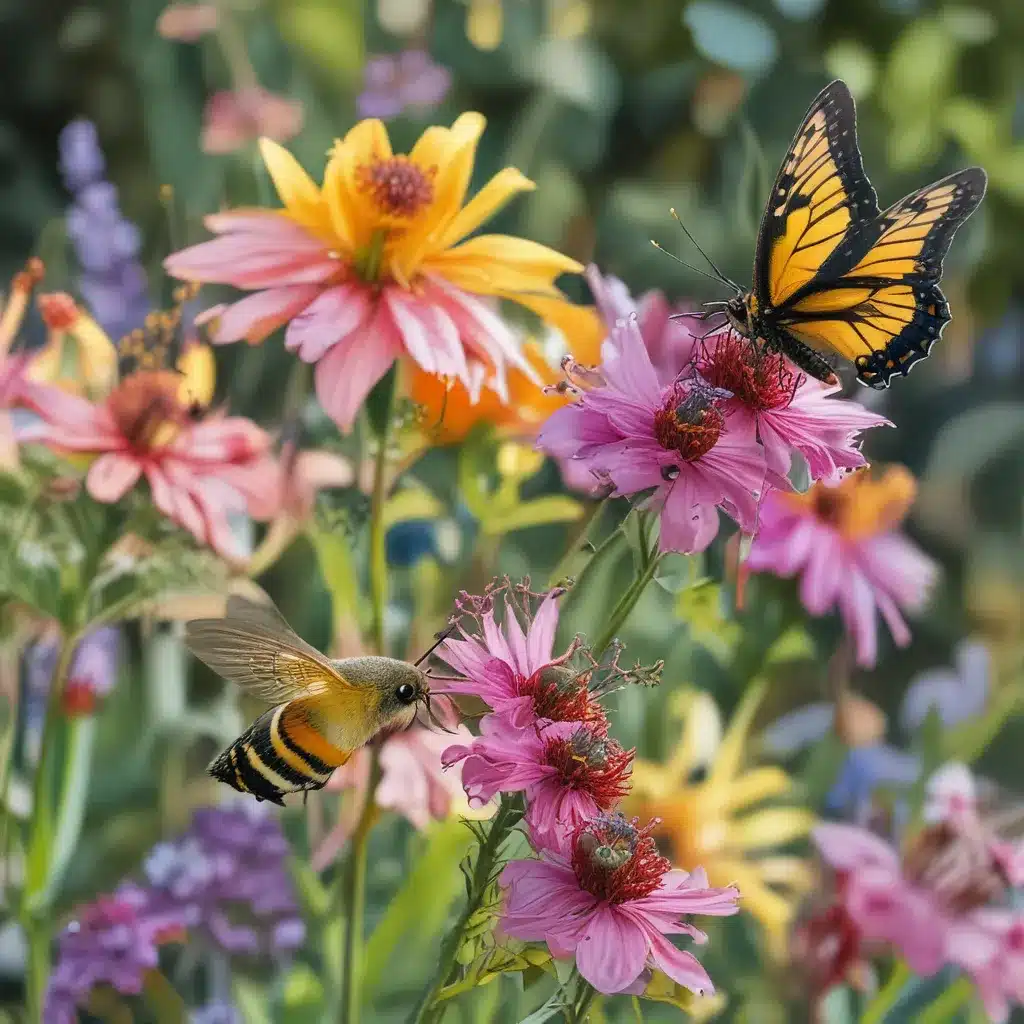A Buzzing Adventure Awaits
I’ll never forget the day I decided to transform my ordinary backyard into a buzzing, fluttering oasis for pollinators. It all started with a couple of innocuous milkweed plants – the gateway drug, if you will, to a full-blown pollinator paradise.
You see, I had this unruly patch of privet that was just taking over a small, unused space by the house. So, I figured, why not turn it into a little garden box and see what happens? Along with the milkweed, I added some salvia, goldenrod, and brown-eyed Susans – all plants that would attract butterflies, bees, and even hummingbirds. Before long, we had a regular pollinator stopover zone!
As I proudly told the kids, we now had a “pollinator pocket” – a tiny oasis in our backyard that was making a big difference. Suddenly, we were seeing monarchs leaving tiny eggs on the milkweed, and their caterpillars munching away at an astounding rate. It was like a lightbulb went off in my head – if this little garden box could do so much, why not dedicate more of the yard to creating a full-blown pollinator paradise?
The Great Backyard Makeover
And that’s exactly what I set out to do. I started by taking a closer look at the trees in our yard. Luckily, they were mostly native species like live oak, Eastern red cedar, and wax myrtle – with the exception of one pesky tallow tree, an invasive import from East Asia. That tree had to go, and in its place, I planted a red mulberry.
I also added a loblolly pine that the kids and I had grown from a seedling we found in the woods. That thing is an absolute rocket, growing an astounding 24 inches per year! And to round out the tree lineup, I even trudged in a young magnolia tree, which is still in its “gangly preteen years,” as I like to call it.
But it wasn’t just the trees that needed some pollinator-friendly attention. That manicured lawn of mine was in a tight battle with the wild clover that the bees seemed to prefer. And to be honest, I wasn’t really taking a side – I was just happy to see the bees buzzing around, doing their thing.
A Pollinator Pocket Paradise
As for the rest of the yard, I had this vision of creating a network of “pollinator pockets” – little oases of native flowers and plants that would attract all sorts of winged wonders. I started with that first little garden box, but soon I was eyeing the entire yard, dreaming of a walking path winding through a tapestry of pollinator-friendly blooms.
Of course, I had to leave some room for my daughter Rose to practice her soccer skills and my son Sam to toss the football with his buddies. After all, a pollinator paradise has to coexist with the needs of a growing family. But for the most part, I’ve been letting nature take over, only stepping in to pull the occasional weed or thwart the advance of that pesky tallow tree.
And let me tell you, the results have been nothing short of magical. Our backyard is now a buzzing, fluttering, humming oasis – a true pollinator paradise that’s home to an incredible diversity of winged wonders. From the delicate monarchs to the industrious bees, from the hummingbirds to the nocturnal moths, our little slice of Temecula has become a veritable buffet for pollinators of all kinds.
Cultivating A Pollinator-Friendly Oasis
So, if you’re looking to transform your own backyard into a pollinator paradise, here are a few tips I’ve learned along the way:
-
Go Native: When it comes to plants, stick to species that are native to your local ecosystem. Exotic flowers may be pretty, but they won’t do much for your local pollinators.
-
Diversity is Key: The more diverse your garden, the more diverse the pollinators it will attract. Plan for a variety of blooms from spring through fall to keep the party going all season long.
-
Don’t Forget the Nightlife: Remember to include some moon garden plants, like evening primrose or native cacti, to cater to the nocturnal pollinators like moths and bats.
-
Provide Shelter: Leave some leaf litter and patches of bare soil for ground-nesting bees, and consider building a simple bee hotel to invite in those charming little pollinators.
-
Be Pesticide-Free: Whenever possible, avoid using insecticides. They can be devastating to the very critters you’re trying to attract.
With a little bit of planning and a lot of patience, you too can transform your backyard into a veritable pollinator paradise, just like we did here at A1 Landscape Construction in Temecula, California. So, what are you waiting for? Let’s get planting!




